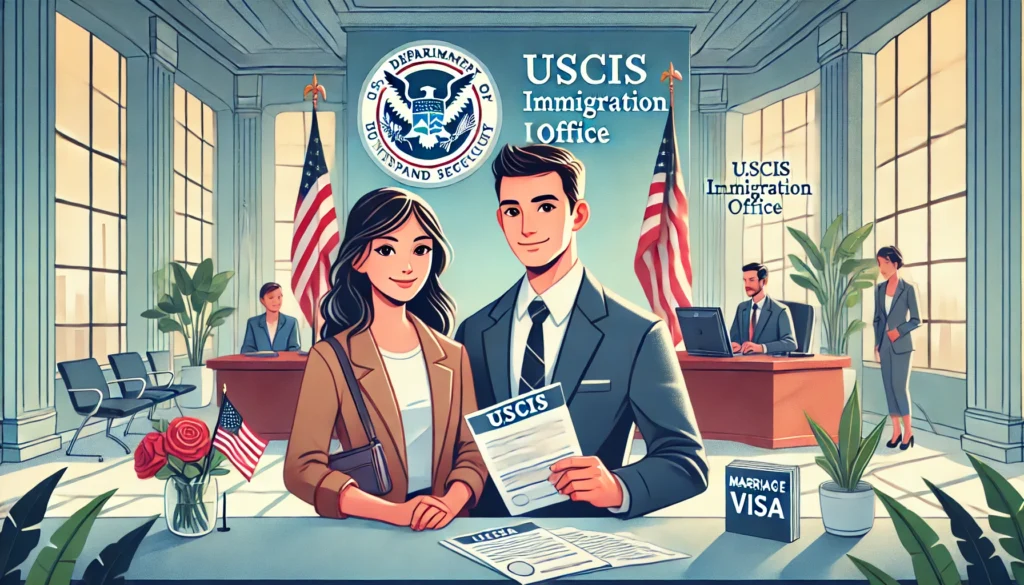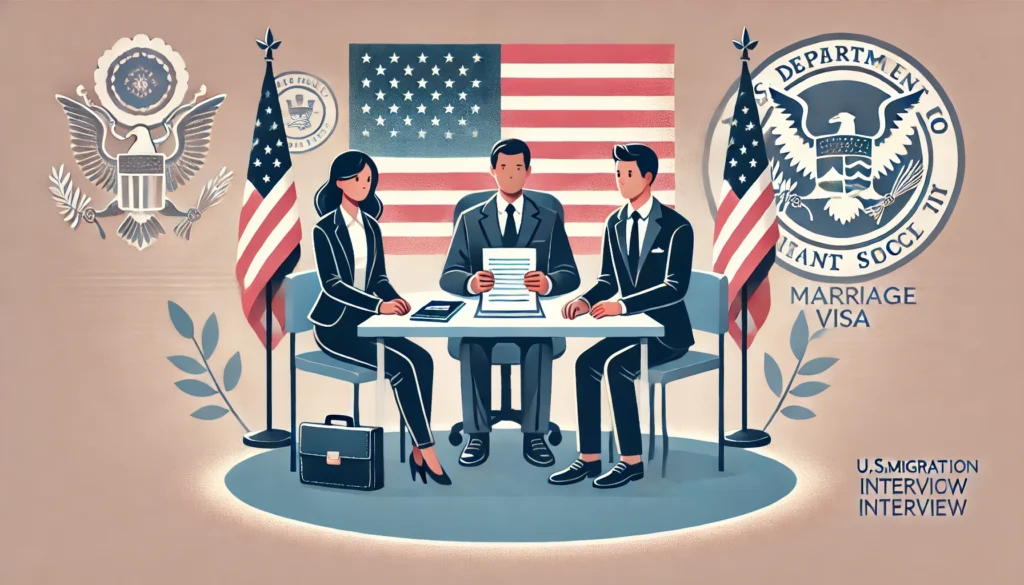Introduction
Receiving a Request for Evidence (RFE) after a marriage-based visa interview can be stressful, but it’s not uncommon. An RFE is issued when the U.S. Citizenship and Immigration Services (USCIS) or a consular officer requires additional documentation to make a final decision on your case. While it may feel like a setback, responding effectively can keep your application on track. This guide explains how to handle an RFE, from understanding its purpose to submitting a successful response.
What Is a Request for Evidence (RFE)?
An RFE is a formal request from USCIS or a consular officer for additional information or documentation. It is not a denial but indicates that your application lacks certain evidence required to make a decision. RFEs can be issued for:
- Insufficient Documentation: Missing or incomplete documents submitted with the initial application.
- Questions About Relationship Authenticity: Additional proof of a bona fide marriage.
- Inconsistencies: Conflicting information in forms, interviews, or supporting documents.
- Eligibility Concerns: Questions about financial support, criminal history, or other requirements.
Steps to Handle an RFE
1. Read the RFE Carefully
Why It Matters:
Understanding the specific reasons for the RFE is crucial for providing an accurate and complete response. Each RFE is unique, tailored to the specifics of your case, and may address issues ranging from missing evidence to clarification of previously submitted information. Misinterpreting the request can lead to delays or denial, making careful reading essential.
What to Do:
- Review the RFE letter thoroughly to identify the requested evidence. Pay attention to the exact wording and specific documents or explanations being asked for.
- Note the deadline for submission, typically 87 days from the date of the notice, and mark it prominently on your calendar to avoid last-minute rushes.
- Highlight the sections detailing the missing or insufficient evidence and cross-reference them with your existing application. This will help you identify which aspects need further attention.
- If any part of the RFE is unclear, consider seeking clarification from an immigration attorney or a trusted professional to ensure you understand exactly what is being requested before proceeding with your response.
2. Gather Required Documentation
Why It Matters:
Providing the exact documents requested ensures a timely resolution of your case.
Commonly Requested Documents:
- Proof of Relationship: Additional photos, joint bank account statements, shared lease agreements, or affidavits from family and friends.
- Financial Evidence: Updated tax returns, pay stubs, or employment verification letters.
- Identification Documents: Corrected or missing passports, birth certificates, or divorce decrees.
- Clarifications: Explanations for discrepancies in interview answers or application forms.
Tips:
- Include documents in the requested format (e.g., certified copies if specified).
- Avoid submitting irrelevant or excessive documentation that isn’t requested.
3. Prepare a Cover Letter
Why It Matters:
A clear and concise cover letter helps USCIS or the consular officer understand your submission.
What to Include:
- Reference the RFE case number and date.
- Provide a summary of the documents included in your response.
- Briefly address how the submitted evidence resolves the issues raised in the RFE.
4. Organize Your Submission
Why It Matters:
Well-organized responses make it easier for immigration officers to review your case.
Tips:
- Label each document clearly and match it to the RFE’s specific requests.
- Arrange documents in the same order as listed in the RFE.
- Use dividers or tabs for larger submissions to separate categories of evidence.
5. Submit Your Response Promptly
Why It Matters:
Missing the submission deadline can result in application denial.
What to Do:
- Double-check your response packet for completeness before submission.
- Follow the submission instructions in the RFE (e.g., mailing address or online submission).
- Use a tracking service to confirm delivery.
Common Mistakes to Avoid
- Ignoring the Deadline: Failing to respond within the specified timeframe can lead to case closure.
- Submitting Incomplete Evidence: Ensure every requested document is included.
- Providing Unnecessary Information: Stick to what is requested to avoid confusion.
- Not Keeping Copies: Retain copies of your response for your records.
After Submitting Your RFE Response
What to Expect:
- Acknowledgment: USCIS may issue a receipt confirming your response has been received.
- Further Review: The response will be evaluated, and additional processing time may be required.
- Decision: USCIS or the consular officer will issue a decision, which could be approval, denial, or another RFE if additional clarification is needed.
Processing Time:
RFE responses typically take several weeks to process, depending on the complexity of the case and USCIS workloads.
When to Seek Professional Help
Consider consulting an immigration attorney if:
- The RFE involves complex issues or potential ineligibility.
- You are unsure how to address discrepancies or provide the requested evidence.
- You’ve received multiple RFEs or a Notice of Intent to Deny (NOID).
Conclusion
Handling a Request for Evidence after a marriage-based visa interview requires careful attention to detail, timely action, and a proactive approach. By thoroughly understanding the RFE, gathering the required documentation, and submitting a well-organized response, you can address any concerns raised by USCIS and ensure your application remains on track. This step, while challenging, is an opportunity to fortify your application and provide additional clarity to the reviewing officers.
An RFE allows you to revisit your case, correct any shortcomings, and build a stronger narrative around your eligibility and the authenticity of your marriage. By working diligently to compile the requested documents and aligning your response with the specific concerns outlined in the RFE, you can demonstrate both your commitment to the process and your compliance with U.S. immigration laws.
While an RFE may seem daunting, it also serves as a reminder that the case is still active and offers a pathway to approval. With proper preparation, attention to detail, and if necessary, the guidance of an immigration professional, you can effectively navigate this step. By meeting the requirements laid out in the RFE and adhering to submission deadlines, you can move closer to achieving your goal of securing a marriage-based visa and beginning your new life in the United States.


